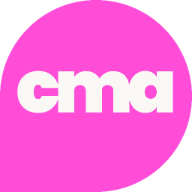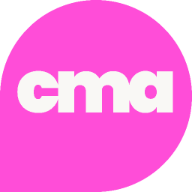As a follow-up to our "Set up a customer marketing function: The first 30 days" article, we're here to talk about the second month of your customer marketing plan.
The first 60 days are dedicated to actually developing the marketing strategy for the year. In this article, we're going to go through the following steps:
- Stage 1: Outline goals for increasing valuable advocates
- Stage 2: Utilize adoption and the customer journey
- Stage 3: Outline your events and programs
- Stage 4: Develop a communication plan
Stage one: Outline goals for increasing the number of valuable advocates
As with most things customer marketing related, it all comes down to talking with your customers. Begin this process by setting up interviews with your current base of advocates to build a rapport with them.
A good process to begin is to collaborate with customer success and develop an advocate nomination process to streamline your team's intentions and values when it comes to picking advocates. Another way of doing this is to develop a submission process which’ll allow other teams to nominate compelling candidates for customer case studies.
For example, you might develop a questionnaire or template that highlights how customers align with your key vision and messaging. Also, do one that explores customer challenges and pain points to allow for valuable collaboration.
What your goals should contain
There are four key elements that, no matter how you present your goal, should always be included. These components are vital for having a clear understanding of what you’re aiming for in your marketing campaigns, and how to get there.
- Brand awareness
- Impact
- Metrics for success
- Timeframe for total completion
- Support initiatives
Brand awareness - Your goals should align consistently with the company’s overall style, and tone. Be aware of the company’s presence on social media and how other marketing strategies have interacted with customers in the past. Having a consistent brand allows your business to grow and attract your ideal customers.
Impact - Make sure that your improvements are an act to improve, change, or amend your current processes. Understand clearly how and why making this goal will improve your organization's current performance, and make sure that the people who’ll be working towards this goal understand that too.
Metrics for success - Clearly define how you will measure your progress towards the goal. Make sure the metric you set is challenging but possible. Take into account your current resources and obstacles.
Time frame for completion - Establish a time frame to make your goals more concrete, and plan the actions you must take to achieve the goal so they don’t remain vague and undetermined.
Supporting initiatives - Supporting initiatives refers to the actions within your timeframe that engage your team into taking steps to achieve the goal. Establish the resources and support from other departments you’ll need. These’ll include the sales team, customer success, product marketing, and other marketing channels.
How to structure your goals
There are a variety of structures which you can use to set your marketing objectives, and the one you choose will depend on your organization, and your style of internal ecosystem.
CLEAR template
The CLEAR structure is one that identifies the areas in which you should be setting goals, from both a logical and an emotional perspective. The acronym helps you ensure that your goals, for whatever time period you are setting them for, actually cover every area of work that you need.
C - Collaborative - The goals you set should always bear in mind the importance of the collaborative aspect of your business. Internal goals should never clash, and should be made with the intention of streamlining and maintaining the momentum of your internal processes.
L - Limited - Your goals should be realistic in their time and scope. Goals that don’t have a time limit or topic limitation will end up hanging in the air for months and are far more likely to get abandoned. The people working toward these goals should believe that they can achieve them, and have a good understanding of how they can achieve them.
E - Emotional - When writing your goals, make sure that your team understands their significance. Choosing emotional beats to put into your goal can help your team connect with them more easily, making them more passionate about fulfilling the goal.
A - Appreciable - When your goals are large and ambitious, make sure to break them down into smaller, actionable steps for your team to address.
R - Refinable - This is the important part. Be willing to modify your goals in response to new findings as they come out. Keep an eye on what is and isn’t working. Is there a new competitor in the market? Has your market subject had any sudden or significant changes?
Always be aware of trends and developing data so that you can adjust your aims and not be left behind.
An example
Implementing a CLEAR goal will look something like this: Say you have a project in mind for your team:
- Collaborative - As project manager, I will work with my project team to ensure the successful completion of this qualification project.
- Limited - We will complete this project in 6 months’ time.
- Emotional - We understand that the success of this project will help the company… (increase customer retention, improve sales, support the launching of new products, etc.)
- Appreciable - To achieve this, we’ll dedicate at least 30% of our time to it. We’ll complete at least 1 milestone every month to ensure we’ll successfully complete the project by the deadline.
- Refinable - Every week, we will come together to review our progress and resolve any roadblocks, so that we may achieve our milestone and timely completion of the qualification project.
SMART template
SMART goals are usually best used for when you begin breaking down larger, more ambitious goals into smaller, actionable steps.
S - Specific - Your goals need to be clearly defined and unambiguous so that you and your team understand what needs to be achieved and why.
M - Measurable - In order to measure progress, and monitor if you’re on track to achieve these goals, you need to have a quantifiable outcome of this goal.
A - Attainable - Take your current resources and team members into account, and make a goal that is challenging, yet possible for you to succeed at.
R - Relevant - Make sure your goals are relevant to your overall business values and targets.
T - Time-bound - Establish a start and end date for your goal, so that teams are constantly aware of the goal as they’re working. Giving your goals a time frame will also help avoid burnout and fatigue when it comes to the enthusiasm around achieving them.
A goal without a time limit risks teams losing sight of the aim. If it doesn’t have an end date it isn't a goal, but a chore.
An example
Here’s an example of a SMART goal in action. Say you want to improve your team's results. Your SMART goal will look something like this:
- Specific - I will help my team get better sales leads, so they spend their time more efficiently by only selling to people who are actually likely to purchase.
- Measurable - The aim is to increase sales by 5%.
- Achievable - The main reason our current leads don’t purchase is that they do not accurately match our buyer personas. By making sure our teams know who our targets are, and can match that to the leads we connect with, then our sales will more likely increase.
- Relevant - Our goal is to increase company sales by over 15% this year.
- Time-bound - We aim to meet our goals of increasing sales by 5% within the next 3 months. Then we will re-evaluate our strategy.
OKR template
Objectives and Key Results, or OKRs, are different from other goals, as how you use them is slightly different. OKRs are more challenging for your team and ambitious in nature but have measurable achievements.
O - Objective - This goal-setting type usually has one overarching objective. This is a simple but clear statement of what is to be achieved; no more, no less. The details of how you’ll reach this goal are detailed by the key results.
KR - Key results - The objective is supported by four to five key results. These are ways to benchmark the road to get to the objective. These should be specific, time-bound, and aggressive in order to meet the equally ambitious objective. Key results shouldn’t leave any room for ambiguity. Either you complete a key result or you don’t. That way, there is no gray area when it comes to reviewing your successes.
An example
Here’s an example of an OKR in action. Say you want to improve your overall company growth. This is an ambitious goal. You’ll set out your OKR like this:
Objective - Grow our business.
Key results - Our key results to mark the success of this objective are to:
- Grow company revenue to $2M
- Effectively launch our new product
- Reduce churn to <5% annually through customer marketing
OKRs often get confused with KPIs but are distinctly different. If you want to learn more about OKRs we have a more in-depth article here:

At this point, it would also be useful to track the revenue impact of a few closed deals that were influenced by customer references. Identify why they worked.
Stage two: Utilize adoption and the customer journey
Put into place a plan that can help accelerate communication with customers, and begin building a backlog of customer stories to help elevate your upcoming marketing strategies.
Begin to outline your customer lifecycle plans. Make sure that your messaging is unique to each stage in the customer journey to ensure you and your customers continue learning through this relationship.
First, let’s begin by demystifying the customer journey for you. Brooke Wilson, Senior Customer Lifecycle Manager at AlphaSense, describes it like this:
“It’s really a visual representation of all of the touchpoints, all of the actions, the emotions, the feelings customers are going through that we can map on a visual scale to say, ‘yes, this is working’ or there are areas of opportunity, or maybe there are areas of redundancy.”
- A seamless experience.
- Supported by data-driven decision-making.
- Set up for continuous improvement.
- Prioritizes customer loyalty and advocacy.
Implementing a comprehensive plan that accelerates communication with customers and cultivates a repository of customer stories is essential for enhancing upcoming marketing strategies, and is made even more sustainable when being supported by a well-defined customer journey map focusing on seamless experiences.
Stage three: Outline your events and programs
This is the stage in which you can begin planning larger pieces of content for your customers, such as workshops and events.
One such workshop could be the Launch & Learn. This is a workshop-style event that’ll go hand-in-hand with product updates and new releases where customers get hands-on experience and advice on how to use your new product. Something like this would be good to collaborate with customer success to ensure it meets its best potential.
Work with the other teams in your company to identify ‘white space’ in your target accounts. This means identifying customer goals, challenges, and initiatives that your business can help solve.
You can also take advantage of automation and have email sequences that collect information from customers based on certain behavior patterns.
Stage four: Develop a communication plan
Here, customer segmentation makes itself known once again. One way to increase retention is to segment at-risk customers and send them value-based email campaigns to try to get them to stay with your brand. This is a good time to give them a voice and air their grievances to you.
During your onboarding process, you should have identified certain milestones and benchmarks you want to aim for. Now is the time to actually map out how you’ll achieve them.
Another thing to do is develop a regular survey cadence. Identify regular times to collect feedback from your customers. This might be good to do just before or after the milestones you’ve mapped out.

The next 61-90 days
This article was just a short snippet from our comprehensive playbook taking you though the first 90 days of a customer marketing set up.
We didn't reveal everything in this article, so go ahead and grab yourself a free copy to get all the unlimited tips and tricks! Here's a breakdown of the structure:
| DAYS 0-30 | DAYS 31-60 | DAYS 61-90 |
|---|---|---|
What are you waiting for? Build your strategy with the most potent plans, methods, and approaches, to ensure maximum efficiency from day one.
Get industry insights






